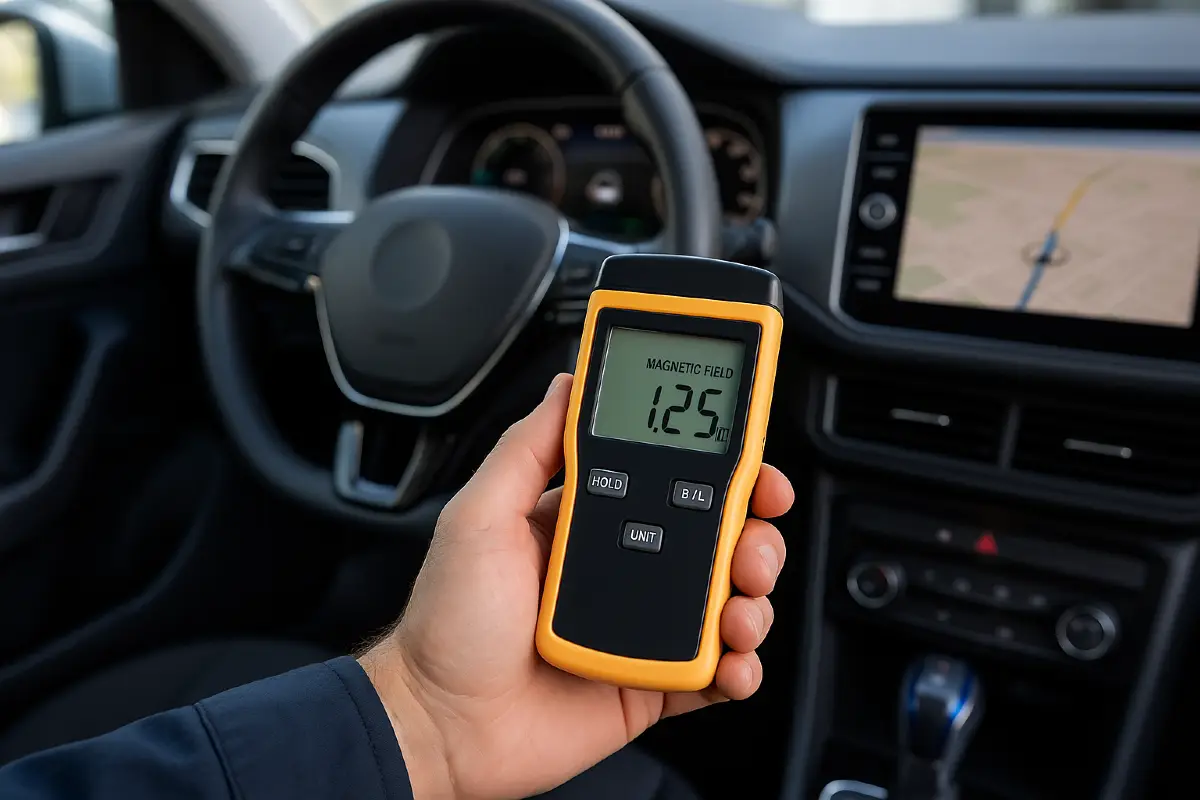What Are the Safe Exposure Limits for Radiation in Electric and Hybrid Cars?

As electric and hybrid cars become more common, people are starting to pay attention to the radiation levels inside these vehicles. This isn’t the same kind of harmful radiation you get from X-rays (called ionizing radiation). Instead, it’s non-ionizing radiation, which comes from the electrical parts of the car, like the battery, electric motor, power electronics and interconnecting cables. These parts create electromagnetic fields (EMFs), particularly low-frequency (ELF) magnetic fields.
Radiation exposure in vehicular environments can be classified into two categories:
- Acute (short-duration, high-intensity)
- Chronic (long-duration, low-intensity)
Most of the safety rules are based on short-term exposure. But for health concerns, it’s the long-term, everyday exposure, like what you get from regular use of electric or hybrid cars, that matters more.
Types of Radiation Present in Electric and Hybrid Cars
The electromagnetic profile of a modern electric or hybrid vehicle comprises multiple field types, each attributable to distinct system-level sources:
- Static Magnetic Fields: Result from constant currents and the use of permanent magnets in traction motors.
- Extremely Low Frequency (ELF) Magnetic Fields: Emerge primarily from alternating currents in drive motors, inverters, DC-DC converters, and cabling; typically within the sub 1000 Hz spectrum.
- Radiofrequency (RF) Electromagnetic Fields: Generated by auxiliary wireless systems including Bluetooth and mobile networks
Measurement campaigns have identified key internal sources such as seat heaters, underfloor high-voltage cable paths, and power electronics units as primary contributors to the in-cabin magnetic field environment.
Types of Exposures
While transient high-level exposures (e.g., fast charging events) are bounded by acute guidelines, the baseline exposure profile of EV occupants is chronic. These persistent ELF-level magnetic fields, although below acute thresholds, are matched with dose-response levels linked in multiple studies to long-term biological effects, including neurodevelopmental and carcinogenic risks.
Safe Exposure Limits: What the Authorities Say
ICNIRP Guidelines
The International Commission on Non-Ionizing Radiation Protection (ICNIRP) has established frequency-dependent exposure ceilings for the general public. Relevant ELF magnetic field thresholds include:
- 100 µT at 50 Hz
- 50 µT at 100 Hz
- 25 µT at 1000 Hz
However, these thresholds only reflect short-term (acute) exposures. ICNIRP does not define reference levels for continuous exposure, which is the more relevant exposure type within vehicles.
Independent epidemiological analyzes, including pooled studies (BioInitiative Report 2012 and National Cancer Institute) associating childhood leukemia incidence with magnetic field exposure, have demonstrated statistically significant risk elevations beginning at 0.3–0.4 µT. This has led to the IARC’s Group 2B classification of ELF fields as “possibly carcinogenic to humans.”
National Precautionary Limits
Countries such as Israel and certain EU members have adopted long-term reference levels ranging from 0.4 to 1 µT, particularly in environments frequented by children. These values are advisory and intended for chronic exposure scenarios.
Vehicle-Specific Recommendations
In light of these findings, multiple research groups and technical committees suggest limiting mean cabin exposure levels to below 0.4 µT, particularly for frequent users and sensitive subpopulations (e.g., children, pregnant individuals).
Measured Radiation Levels in Cars: What the Studies Show
Vehicle-level measurements demonstrate considerable variation based on design, powertrain layout, and operating conditions:
- Localized peaks approaching 100 µT have been recorded in footwells and rear seat areas—proximal to battery packs and power lines, based on a technical report by the German Federal Office for Radiation Protection (BfS).
- Charging scenarios, particularly DC fast charging, can result in transient exposures up to 100 µT in proximity to cables.
- Typical driving exposure averages fall between 0.1 and 2 µT, within ICNIRP acute limits but exceeding long-term advisory levels in specific regions of the cabin.
Field studies, including those commissioned by the German Federal Office for Radiation Protection (BfS), consistently identify the floor area and rear seats as ELF hotspots primarily due to proximity to shielded but high-current subsystems.
Best Practices to Minimize Exposure
Mitigation of ELF exposure in vehicles can be approached from both design and operational perspectives:
- Occupant location management: Minimizing seating time directly over battery trays or adjacent to inverter housings.
- Charging behavior: Avoiding prolonged occupancy during fast charging cycles.
- Active cancelation add-ons: One effective mitigation strategy is the installation of active magnetic field cancellation systems, such as SafeFields. This system, which can be retrofitted into existing electric and hybrid vehicles significantly reduces occupant exposure.
The Precautionary Principle
The Precautionary Principle, as advocated by the World Health Organization and various policy groups, encourages minimizing exposure where feasible even in the absence of conclusive harm. This is particularly emphasized in design considerations for future EV platforms and urban mobility planning.
Forward-leaning regulatory ecosystems, such as those adopting NCAP-based EMF grading systems, incentivize manufacturers to integrate exposure-aware layouts and transparent measurement methodologies. These frameworks are in line with broader public health initiatives focused on minimizing chronic ELF exposure in populated microenvironments.

